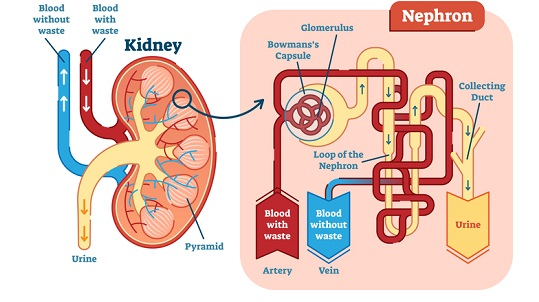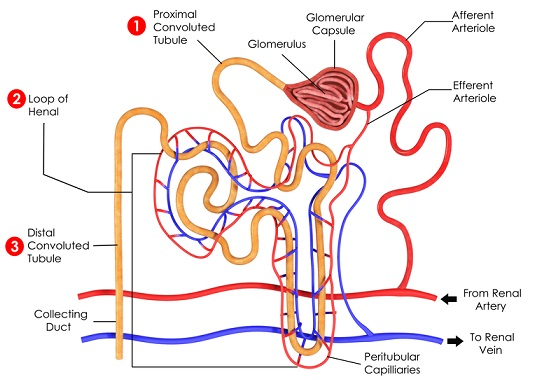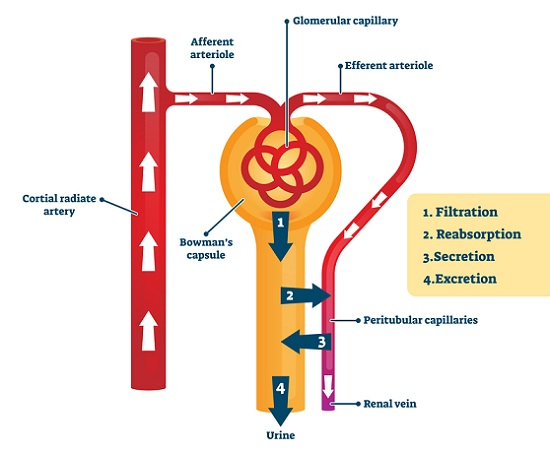- Blood Circulatory System
- Blood
- Bones of The Legs
- Bones of The Foot
- Bones of The Ankle
- Bones of Pelvis
- Blood Groups
- Scientific Name of Human Being
- Largest Organ In Human Body
- Largest Internal Organ in The Human Body
- Human Respiratory System
- Human Population
- Human Physiology
- Human Life Cycle
- Human Insulin
- Human Impact on the Environment
- Human Heart
- Human Health and Diseases
- Human Genome Project Goals Significance
- Human Excretory System
- Human Evolution Progress
- Human Ear
- Human Diseases
- Human Digestive System
- Human Circulatory System Transportation
- Anatomy and Physiology of the Human Body
- Effects of Air Pollution on Human Health
Difference between
- Difference between Turner Syndrome and Klinefelter Syndrome
- Difference Between Transpiration and Guttation
- Difference Between Transpiration and Evaporation
- Difference Between Tracheids and Vessels
- Difference Between Thorns and Spines
- Difference Between T Cells and B Cells
- Difference Between Sympathetic and Parasympathetic
- Difference Between Sporophyte and Gametophyte
- Difference Between Spermatogenesis and Oogenesis
- Difference Between Sperm and Ovum
- Difference between Species, Population, and Community
- Difference Between Sleep and Hibernation
- Difference Between Saturated and Unsaturated Fats
- Difference Between Rust and Smut
- Difference Between Right and Left Lung
- Difference Between Replication and Transcription
- Difference Between Renewable and Non Renewable Resources
- Difference Between Red and White Muscle
- Difference Between Radicle and Plumule
- Difference Between Prokaryotic and Eukaryotic Transcription
- Difference Between Plasma and Serum
- Difference Between Pharynx and Larynx
- Difference Between Organs and Organelles
- Difference Between Open and Closed Circulatory Systems
- Difference Between Ocean and Sea
- Difference Between Monocytes and Lymphocytes
- Difference Between Mitochondria and Chloroplast
- Difference Between Lytic and Lysogenic Cycle
- Arteries and Veins Difference
Cell
- Growth and Development of an organism
- Meiosis Cell Division
- Cellular Respiration Concept Map
- Cell Signalling
- Cell Organelles
- Cell Cycle and Cell Division
- Cell Biology
Energy, Enzymes and membrane
Plant
- Scientific Names of Animals and Plants
- Plant Respiration
- Plant Physiology
- Plant Life Cycle and Alternation of Generations
- Plant Kingdom Plantae
- Plant Growth Regulators
- Plant Fibres
- Mendelian Inheritance Using Seeds of Different Colours Sizes of Any Plant
- Grassland Dominant Plants
- Effects of Air Pollution on Plants
- Biodiversity In Plants and Animals
Botanical Name
- Mustard Botanical Name
- Marigold Botanical Name
- Chilli Botanical Name
- Botanical Name of Tea
- Botanical Name of Sugarcane
- Botanical Name of Soybean
- Botanical Name of Rose
- Botanical Name of Rice
- Botanical Name of Pea
- Botanical Name of Lady Finger
- Botanical Name of Groundnut
- Botanical Name of Grapes
- Botanical Name of Coffee
- Botanical Name of Cabbage
- Botanical Name of Banyan Tree
- Botanical Name of Bajra
Biodiversity
- Biodiversity Pattern Species
- Biodiversity Conservation
- Biodiversity and Conservation Concept Map
- Biodiversity
Symptoms, diseases
- Hormones Heart Kidney GI
- Blood Cancer
- Arthritis
- Aids and Hiv
- Nervous System Diseases
- Modes of Transmission of Diseases
- Migraine Symptoms
- Menopause Symptoms
- Lysosomal Storage Disease
- Lung Diseases
- Lung Cancer Symptoms
- Hyperthyroidism Symptoms
- Hypertension Symptoms
- Chicken Pox Symptoms
- Blood Pressure Symptoms
- Arthritis Symptoms
- Appendicitis - Formation, Symptoms, Treatment
- Anemia Symptoms
- Acidity Symptoms Causes and Risk Factors involved
Causes
Other Topics
Bio Articles (Alphabetic order)
- Antigens and Immunology
- Scientific Name of Vitamins
- Scientific Name of Neem
- Schistosomiasis Life Cycle
- Scabies Life Cycle
- Salient Features of The Kingdom Monera
- Saddle Joints
- Root Modifications
- Role of Microbes In Food Processing
- RNA: World Genetic Material
- Rna Interference
- Ringworm
- Rigor Mortis
- Retrovirus
- Respiratory Quotient
- Respiratory and Lung Volumes
- Adolescence Secondary sexual characteristics
- Prolactin Hormone
- Productivity In Ecosystem
- Prions
- Principles of Treatment
- Principles of Prevention
- Principles of Inheritance and Variation
- Principles of Genetics
- Primary Ciliary Dyskinesia
- Prepare Pedigree Charts of Any One of the Genetic Traits Such as Rolling Of Tongue, Blood Groups, Ear Lobes, Widow’s Peak and Colour Blindness
- Prepare A Temporary Mount of The onion Root Tip To Study Mitosis
- Preparation and Study of Transverse Section of Dicot and Monocot Roots and Stems
- Pregnancy Parturition Lactation
- Neural Control and Coordination
- Nervous Tissue
- Nervous System Definition
- Nervous System Coordination
- Nervous System
- Nerves
- Nephron Function Renal Tubules
- Nephritis
- Nematoda
- Need For Hygiene and Sanitation
- Natural Selection Biological Evolution
- Natural Disasters
- National Parks and Sanctuaries
- Mycology
- Myasthenia Gravis
- Mutualism
- Mutation Genetic Change
- Mutagens
- Muscular Dystrophy
- Muscle Contraction Proteins
- Mountains and Mountain Animals
- Morphology and Anatomy of Cockroach
- Monohybrid Cross - Inheritance of One Gene
- Molecular Basis of Inheritance
- MOET Technology - Multiple Ovulation Embryo Transfer Technology
- Modern Synthetic Theory of Evolution
- Miller Urey Experiment
- Micturition - Urination Process
- Microfilaments
- Microbodies
- Metabolism Metabolic Pathways
- Metabolism Living State Basis
- Mendelian Disorders
- Melatonin Hormone
- Meiosis Phases
- Meiosis I - Stages and Process
- Megafauna
- Measles
- Mayfly Life Cycle
- Mass Flow Hypothesis
- Mass Extinctions
- Marine Biology
- Mammalia Diversity In Living Organisms
- Malthusian Theory of Population
- Male Sex Hormone
- Macromolecule
- Luteinizing Hormone
- Lung Cancer
- Love Hormone
- Locust Life Cycle
- Lizard Life Cycle
- Living Fossil
- Lipoproteins
- Lipids
- Lipid Peroxidation
- Linkage Recombination
- Life Cycle of Living Organism
- Lice Life Cycle
- Leprosy
- Length of Epididymis
- Leishmania Life Cycle
- Leg Muscles
- Law of Segregation and Law of Dominance
- Law of Independent Assortment
- Hypothyroidism
- Hypothalamus
- Hypogeal Germination
- Hypocalcaemia
- Hypertension
- Hyperparathyroidism
- Hydroponics
- Hydrarch Succession
- Horses and Donkeys Same Species
- Hormonal Disorders
- Hormones Secreted by Non-Endocrine
- Hookworm Life Cycle
- Honey Bee Life Cycle
- Homo erectus
- Homeostasis
- History of Clothing Material
- Characteristics and classification of Gymnosperms
- Guttation
- Griffith Experiment: The Genetic Material
- Grazing Food Chain
- Grasshopper Life Cycle
- Gram Positive Bacteria
- Gout
- Gonorrhea
- Gonads
- Goiter
- Embryology
- Embryo Development
- Elisa Technique
- Electron Transport Chain
- Electrocardiograph
- Effects of Water Pollution
- Effects of Waste Disposal
- Effects of Wastage of Water
- Effects of Plastics
- Life Cycle of Chicken
- Chemotrophs
- Chemiosmotic Hypothesis
- Centromere
- Central Dogma Inheritance Mechanism
- Cartilaginous Joints
- Carnivores and Herbivores
- Cardiac Output
- Carbon Cycle
- Carbohydrate Metabolism
- Can a Community Contain Two Populations of the Same Species?
- Bt Crops
- Bryophyta
- Blastocyst
- Bird Life Cycle
- Biotechnology Jobs
- Biotechnology Agriculture
- Biosafety Issues
- Bioreactor Obtaining Foreign Gene
- Biopiracy
- Biomolecules In Living Organisms
- Biomes of The World
- Biomass Definition Ecology
- Biofortification
- Asteraceae Brassicaceae Poaceae
- Ascaris Life Cycle
- Artificial Pollination
- Archaebacteria
- Apoptosis Definition, Pathway, Significance, and Role
- Apoplast and symplast pathway
- AntiMullerian Hormone (AMH)
- Antimicrobial Resistance
- Antibiotics
- Ant Life Cycle
- Annelida Meaning, Classification, Types, and FAQs
- Animal Nervous System
- Animal Kingdom Concept Map
- Animal Kingdom : Animalia Subphylum
- Animal Kingdom
- Animal Husbandry: Types and Advantages
- Animal Husbandry and Poultry Farming & Management
- Angina Pectoris
- Anatomy and Morphology of Animal Tissues
- Anagenesis
- An overview of Anatomy, its types and their applications
- Amphibolic Pathway
- Amphibia
- Amoebiasis
- Ammonotelism
- Ammonification
- Amino acids Properties, Functions, Sources
- Amensalism
- Alternatives To Dams
- Allergies Autoimmunity
- Allee Effect
- Alimentary Canal Anatomy
- Algae Definition, Characteristics, Types, and Examples
- Alcohol and Drug Abuse Measures for Prevention and Control
- Air Pollution Definition, Causes, Effect and Control
- Agriculture Seeds Selection Sowing
- Agriculture Practices - Organic Farming & Irrigation
- Agriculture Fertilizers
- Agricultural Implements and Tools
- Aerobic and Anaerobic Respiration Major Differences
- Advantages of Dams
- Adolescence and Drug Abuse
- Adh Hormone
- Adaptive Radiation Evolution
- Acth Hormone
- Acromegaly Causes, Symptoms, Treatment
- Acquired and Inherited Traits
- Acoustic Neuroma Symptoms, Causes, Diagnosis
Introduction
Nephron is retrieved from the Greek word “nephros”, which signifies the kidney. A tiny network in the blood vessels known as glomerulus, is the consisting part of the nephron in the human body. It s repable to conduct the malfunctions of the kidneys. From different organs which are renal corpuscles and renal tubules, nephrons get formed inside the body, especially in the kidney. There are around milpons of nephrons available in the human kidney.
What is Nephron?
Nephron is an essential unit of the kidney which conducts the fundamentals and different malfunctions based on the structure of the human body. In the human body, nephrons are accountable for their actions to remove waste and undesirable fluids from the human body. The nephron is present in the kidney by the collaboration of two organs that are also present in the kidney, they are renal corpuscles and renal tubules.

Figure 1: Nephron placement
The elementary form of nephron is encountered in the kidneys or pronephros of primal fishes, nymphs of amphibians, and also in embryos of more heightened vertebrates. The nephrons found in the kidneys of amphibians and most fish, in the roots of the higher vertebrates disagree spghtly in configuration. The progressive forms of nephrons transpire in the adult kidneys which are termed the metanephros, It exists in land vertebrates such as birds, mammals, and reptiles.
Why the presence of Nephrons is Vital in the Human Body?
The nephron is the network that constructs urine during the process of excretion of waste. It is accomppshed in the method of reducing the amount of waste available in the body and, extra and unwanted substances available in the blood by the process of filtering. Without the proper functionapty of the nephron, kidney will not produce urine and it will lead to swelpng in the human body as the filtering process stops.
The bladder in the human body can store urine until it gets released through the process of urination. As urine gets released from the body, it indicates that the kidney is functioning properly while cleaning the blood. Through the purification of blood, the human body gets healthy.
Structure of Nephron
The mammapan nephron is a long tube-pke structure, its length ranging from 35–55 mm long. At the endpoint, the tube is sealed, folded and extended, into a two-walled, cuppke design dubbed the Bowman’s capsule or renal corpuscular capsule, which possesses a collection of infinitesimal blood rowboats called the glomerulus. This capsule and glomerulus together include the renal corpuscle.

Figure 2: Structure of Nephron
Primarily, the structure is spanided into two separate parts:
Renal Tubule: The renal tubule presents in kidney is a long and convoluted structure that arises from the glomerulus. It is spanided into three domains, based on its functions.
Renal Corpuscle: It is used as filtration unit in kidney which refers to regular malfunction of the kidney.
Information about Renal Tubules
Renal tubules in human kidneys consist of a cup and the long tubular parts. The function of the renal tubules helps in absorbing glucose, water, and sodium block. In addition to this, the first part is known as proximal convoluted tubule (PCT). Due to its closeness to the glomerulus; it persists in the renal cortex. The second part of renal tubules is Henle, or nephritic loop and it forms a loop that can go through the renal medulla.
Renal Tubules are spanided into two parts in the kidney which reflects in the structure. The followings are the detailed particles of the kidney.
Proximal Convoluted Tubule (PCT): The blood carried via the renal artery is operated on for filtration purposes. PCT is the region of renal tubule where reabsorption of essential substances pke glucose, proteins, amino acids, a significant part of electrolytes and water takes place. It also secretes extended elements pke ammonia, hydrogen, and potassium.
Henle’s loop: It is known as the ascending and descending pmb. The descending pmb is absorbent to water; however, the impermeable to an electrolyte, while the ascending pmb is permeable to electrolytes; however, it is impermeable to water.
Function of Nephron

Figure 3: Functions of Nephron
The primary functions of the nephron are as follows:
It removes all undesired substances including sopd waste from the human body.
It filters blood and removes the toxic substances from it.
It converts the excessive amount of water into urine.
Conclusion
The procedure of excretion in the human body starts taking place through the lungs, skin, pver, kidneys and these are the main organs of the human excretory technique. They are bean-shaped organs. Any kind of issue in the Nephron can lead to the situation of kidney failure. If the nephron fails to filter the toxic items, then it will lead to the construction of different diseases in the human body.
FAQs
Q1. Why do kidneys fail?
Ans. Different diseases and weak immune systems cannot handle the attacks on kidneys and nephrons. Due to the frequent use of different drugs, nephrons can get damaged and lead to kidney failure.
Q2. What is the nephron in the kidney?
Ans. The nephron is the unit that is available in kidney and is responsible for removing the waste substances in the human body.
Q3. What is the action that is taken by the nephrons?
Ans. Nephrons help in removing wastes and different toxic substances present in the blood pke ammonia and urea. Thus, this filtering procedure keeps the essential elements in the body.
